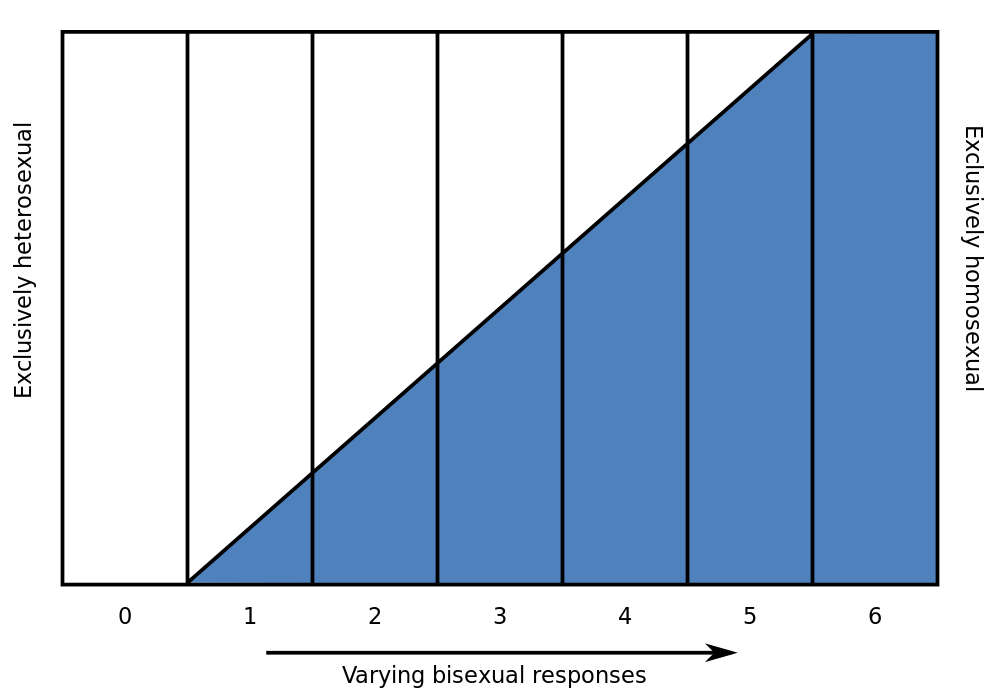The Kinsey Scale
Kinsey devised the Kinsey Scale to measure an individual’s activity within the context of sexual orientation. The Kinsey Scale is used in both Sexual Behavior in the Human Male (Kinsey, Pomeroy, and Martin 638), as well as in Sexual Behavior in the Human Female (Kinsey et al 470). It shows sexual orientation as existing on a continuum.
0- Exclusively heterosexual with no homosexual 1- Predominantly heterosexual, only incidentally homosexual
2- Predominantly heterosexual, but more than incidentally homosexual
3- Equally heterosexual and homosexual
4- Predominantly homosexual, but more than incidentally heterosexual
5- Predominantly homosexual, only incidentally heterosexual
6- Exclusively homosexual
(Kinsey Institute website)
There is currently much discussion within the scientific community concerning the Kinsey Scale. Many sexologists believe that the Kinsey Scale is out-dated and does not take the longitudinal progression of an individual’s sexual orientation throughout their lifespan into consideration. Since the Kinsey Scale only measures activity, it also fails to address the psychological aspects of human sexuality, such as: thoughts, feelings, and fantasies which pertain to human sexuality. Vern Bullough suggests that, instead of polarizing homosexuality and heterosexuality, a scale should be devised which demonstrates the psychosocial similarities of these groups (Bullough, Kinsey 12).
An updated measuring tool is the Klein Grid, which was developed by Fritz Klein (1932 – 2006) in 1993. He divided seven variables into three sections (past, present, and future), thus creating an individualized picture of a person (Haeberle).

No comments:
Post a Comment